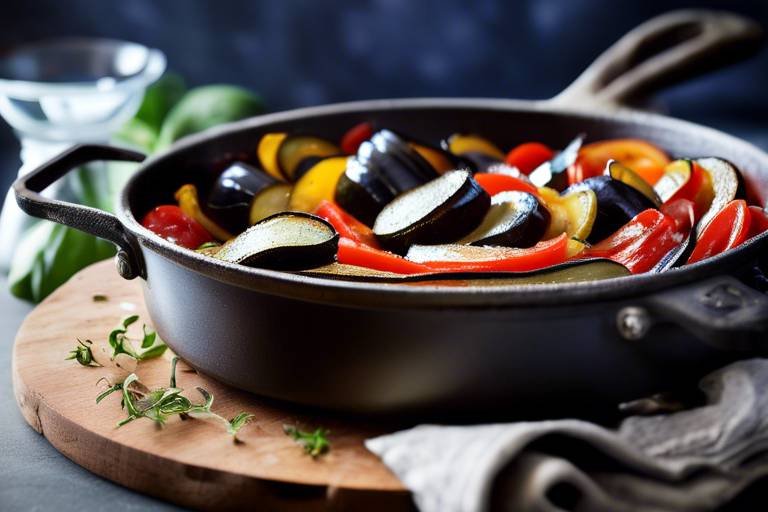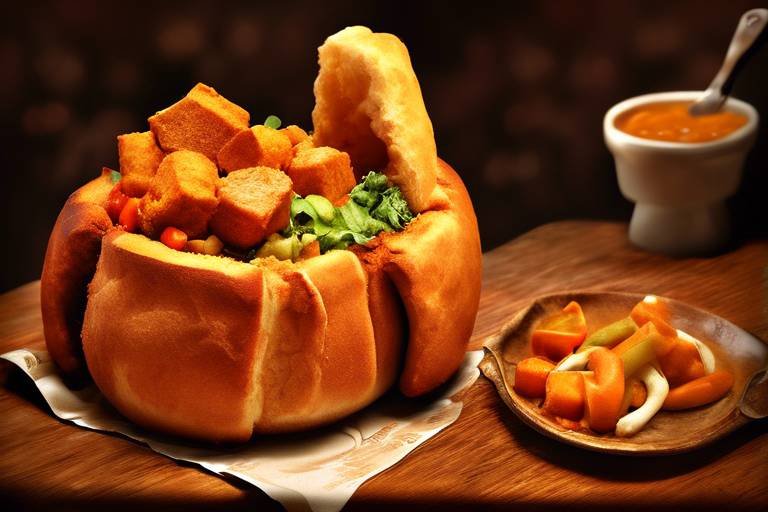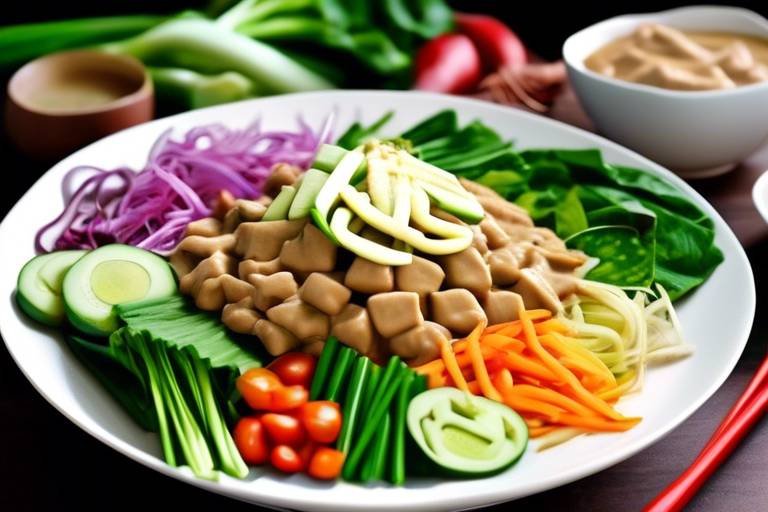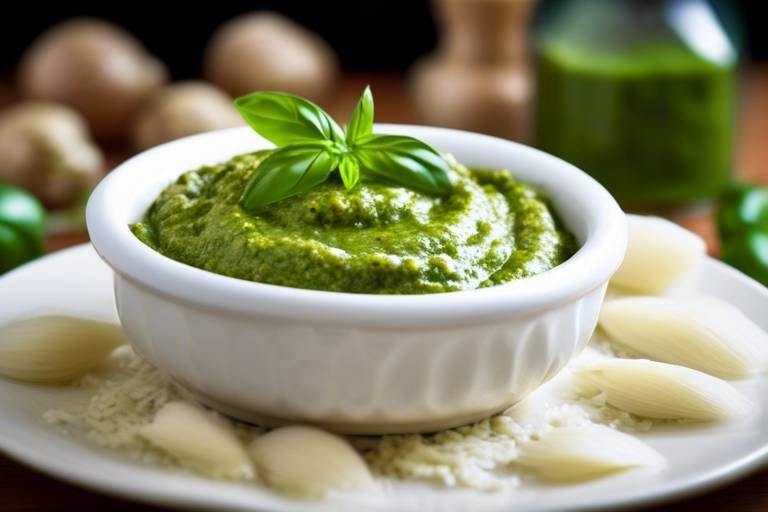How to Make Classic French Croissants
Are you ready to embark on a culinary adventure and master the art of making classic French croissants right in your own kitchen? Get ready to indulge in the buttery, flaky goodness of these iconic pastries that are a staple in French bakeries worldwide. Let's dive into the step-by-step process of creating these delectable treats that will transport you to a Parisian café with every bite.

Ingredients and Tools Needed
When it comes to creating the perfect classic French croissants, having the right ingredients and tools is essential. To start your croissant-making journey, you will need high-quality butter, all-purpose flour, yeast, sugar, salt, and water. These basic ingredients form the foundation of the flaky and buttery croissants that are beloved worldwide.
Additionally, having the proper tools on hand will make the process much smoother. A rolling pin is indispensable for flattening and shaping the dough, while a sharp knife is crucial for cutting the dough into the iconic crescent shape. A pastry brush will come in handy for applying egg wash before baking, giving your croissants that beautiful golden finish.

Making the Dough
Making the dough for classic French croissants is a crucial step in achieving the perfect flaky texture and buttery flavor that defines these pastries. It all starts with combining simple yet essential ingredients such as high-quality flour, yeast, butter, sugar, salt, and water. The key is to use cold butter and water to ensure the dough remains firm and manageable throughout the process.
Once you have gathered your ingredients, the next step is to mix them together to form a rough dough. This initial mixing stage is where the magic begins, as the flour starts to absorb the liquids and develop gluten, giving the croissants their structure and texture. It's important not to overmix at this stage to prevent the dough from becoming tough.
After the dough has come together, it's time to knead it until it becomes smooth and elastic. This process helps to further develop the gluten in the dough, which is essential for creating those characteristic airy layers in the finished croissants. Proper kneading ensures that the dough is well-hydrated and elastic, making it easier to roll out later on.
Once the dough has been kneaded to perfection, it needs to rest and rise to allow the yeast to work its magic. This resting period allows the dough to relax and ferment slightly, enhancing the flavor and texture of the croissants. Cover the dough and let it rise in a warm, draft-free place until it has doubled in size, typically taking about an hour or so.
After the dough has risen, it's time to shape it into the classic square that will eventually be laminated with butter to create those flaky layers. Roll out the dough into a large rectangle, making sure it is of even thickness throughout. This step sets the foundation for the lamination process, where layers of butter will be folded into the dough to create the signature flakiness of croissants.
Overall, making the dough for French croissants is a labor of love that requires patience, precision, and a bit of practice. The process may seem intimidating at first, but with the right ingredients, tools, and techniques, you can master the art of creating these delectable pastries in your own kitchen.
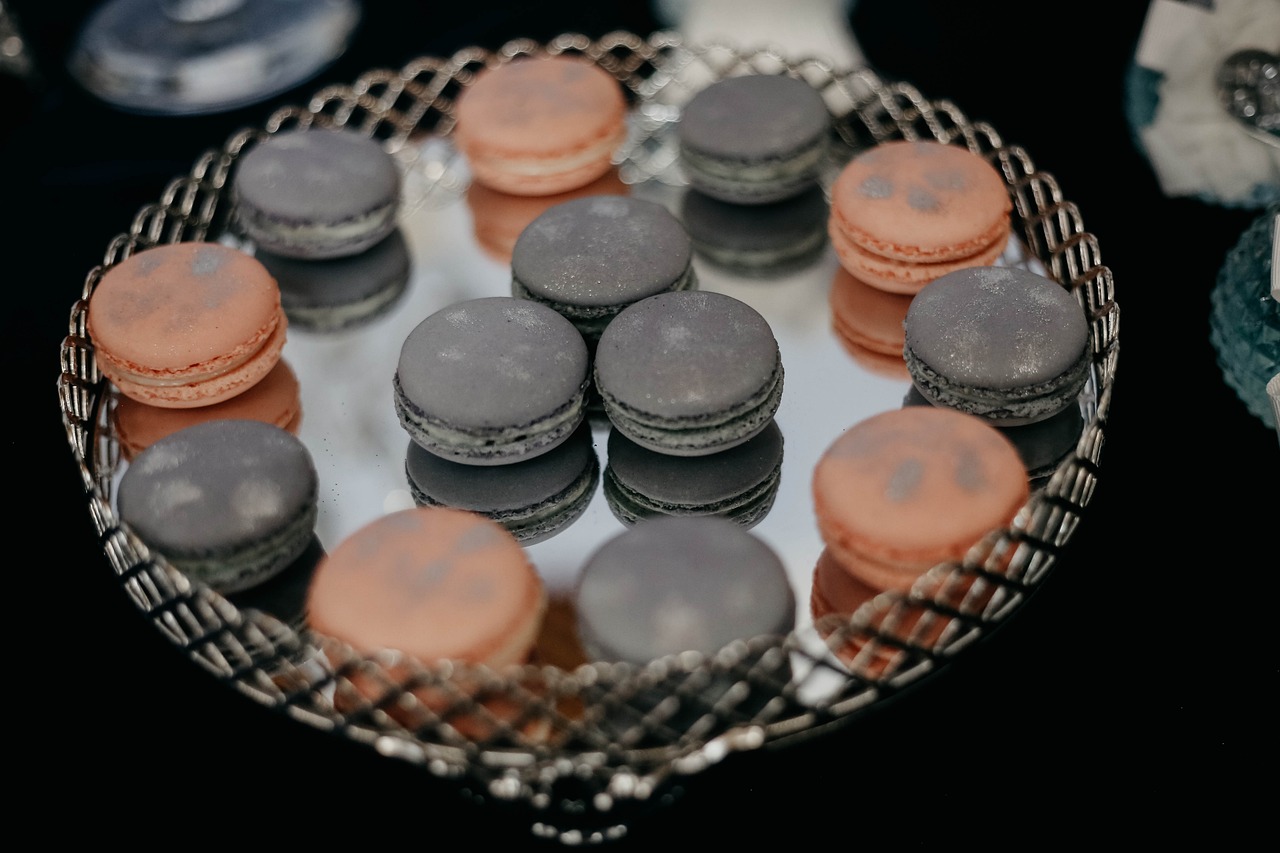
Layering the Butter
When it comes to creating the perfect French croissants, one of the most crucial steps is layering the butter into the dough. This process, known as lamination, is what gives croissants their signature flaky texture and buttery taste. To achieve this, you need to ensure that the butter is cold but pliable, so it can be easily incorporated into the dough without melting completely.
Begin by rolling out the dough into a rectangle and placing a block of cold butter in the center. Fold the dough over the butter, sealing the edges tightly to encase the butter completely. Then, roll the dough out into a long strip, making sure to distribute the butter evenly throughout the dough. This step is crucial for creating those distinct layers that will puff up beautifully in the oven.
After each roll and fold, the dough needs to be chilled to prevent the butter from melting and leaking out. This process of rolling, folding, and chilling is repeated multiple times to create numerous thin layers of butter within the dough. These layers will expand during baking, creating the airy pockets and flaky texture that are characteristic of a well-made croissant.
Properly layering the butter into the dough requires patience and precision, but the results are well worth the effort. The key is to maintain the integrity of the layers while ensuring that the butter is evenly distributed throughout the dough. With practice and attention to detail, you can master the art of lamination and create croissants that are truly a work of culinary art.

Shaping and Cutting
When it comes to shaping and cutting French croissants, precision and technique play a crucial role in achieving that perfect flaky texture and iconic crescent shape. After the dough has been prepared and the butter layers have been incorporated, it's time to give your croissants their distinctive form.
One traditional method for shaping croissants involves cutting the dough into triangles and then gently rolling each triangle from the base towards the tip to create the classic crescent shape. This process requires a steady hand and a gentle touch to ensure that the layers are preserved and the croissants rise beautifully in the oven.
Alternatively, you can also experiment with different shapes and sizes to create unique variations of the classic croissant. From mini croissants for bite-sized treats to larger ones for a more indulgent experience, the possibilities are endless when it comes to shaping and cutting your dough.
For a more uniform look, some bakers opt to use a ruler to ensure that each croissant is cut to the same size, resulting in a visually appealing batch of pastries. Consistency in size not only enhances the presentation but also ensures that the croissants bake evenly, with each one achieving that perfect golden hue.
Remember, the way you shape and cut your croissants can also impact their final texture and flakiness. By paying attention to details such as the angle at which you roll the dough or the depth of your cuts, you can influence how the layers unfold during baking, creating a delicate and airy interior.
Whether you prefer the traditional crescent shape or want to get creative with different designs, the shaping and cutting stage of croissant-making is where you can truly put your personal touch on these beloved pastries. Embrace the process, experiment with various techniques, and enjoy the satisfaction of creating homemade croissants that are as visually stunning as they are delicious.

Proofing and Baking
When it comes to creating the perfect French croissants, the proofing and baking stages are crucial to achieving that light, airy texture and golden, flaky exterior. After shaping your croissants into the iconic crescent shape, it's time to let them proof. Proofing is the process of allowing the dough to rise before baking, giving the croissants their characteristic fluffy interior.
During proofing, the yeast in the dough ferments, producing carbon dioxide that expands the dough and creates air pockets. This step is essential for developing the croissants' structure and ensuring they are not dense but rather light and delicate. The ideal proofing conditions involve a warm, draft-free environment to encourage proper fermentation and rise.
Once the croissants have sufficiently proofed and doubled in size, they are ready to be baked to perfection. Preheat your oven to the correct temperature, usually around 375°F (190°C) for traditional croissants. The high heat is necessary to create steam quickly in the dough, leading to that sought-after flakiness.
When placing the croissants in the oven, make sure to leave enough space between them to allow for expansion during baking. The croissants should bake until they are beautifully golden brown on the outside, indicating that the layers have crisped up and the interior is fully cooked.
One useful tip during baking is to rotate the baking sheet halfway through the baking time to ensure even browning. This simple step can prevent uneven coloring and ensure that all your croissants are perfectly baked.
After removing the croissants from the oven, allow them to cool slightly before indulging in their buttery goodness. The aroma of freshly baked croissants filling your kitchen is a true delight, and the reward of your efforts is a batch of homemade French pastries that rival those from a Parisian bakery.

Adding Fillings and Variations
When it comes to adding fillings and variations to your French croissants, the possibilities are endless. One popular option is to include chocolate filling, which adds a sweet and decadent twist to the classic pastry. The rich chocolate melts into the layers of the croissant, creating a delightful contrast of flavors and textures.
If you prefer a nutty flavor, consider using almond paste as a filling. The creamy almond paste adds a subtle sweetness and a satisfying crunch to each bite. It pairs perfectly with a sprinkle of sliced almonds on top for an extra layer of flavor and texture.
For a savory twist, experiment with fillings like ham and cheese. The combination of salty ham and gooey cheese tucked inside a buttery croissant creates a savory treat that is perfect for any time of day. You can also add herbs or spices to enhance the flavor profile of the filling.
If you're feeling adventurous, try creating fruit-filled croissants by adding fresh berries, sliced bananas, or even a fruit compote. The natural sweetness of the fruit complements the buttery layers of the croissant, creating a refreshing and fruity pastry that is perfect for a light breakfast or snack.
When it comes to variations, you can also experiment with different shapes and sizes of croissants. Instead of the traditional crescent shape, try making mini croissants for a bite-sized treat, or shape the dough into twists or braids for a unique presentation. Get creative with your fillings and variations to make each batch of croissants truly special.

Serving Suggestions
When it comes to serving French croissants, the options are as diverse as they are delicious. These buttery pastries are incredibly versatile and can be enjoyed in various ways throughout the day. For a classic French experience, pair your freshly baked croissants with a steaming cup of coffee or hot chocolate for a delightful breakfast or brunch.
If you're looking to elevate your croissant game, consider using them as a base for sandwiches. Fill a split croissant with your favorite ingredients such as ham and cheese, smoked salmon and cream cheese, or avocado and bacon for a savory and satisfying meal. The flaky layers of the croissant provide the perfect contrast to the fillings, making each bite a delightful experience.
For a sweet treat, croissants can be transformed into decadent desserts. Try filling them with Nutella, fruit preserves, or almond paste for a delightful indulgence. You can also turn croissants into bread pudding by soaking them in a rich custard mixture and baking until golden and crispy.
When serving croissants at a gathering or party, consider creating a croissant platter with an assortment of fillings and toppings. This allows guests to customize their croissants to their liking, whether they prefer a simple butter croissant or a more elaborate creation.
Additionally, croissants can be enjoyed alongside a selection of cheeses, fruits, and jams for a sophisticated and elegant snack or light meal. The buttery richness of the croissants pairs beautifully with a variety of flavors, making them a versatile addition to any menu.

Troubleshooting Tips
When it comes to making classic French croissants, sometimes things don't go as planned. But fear not, as we have some troubleshooting tips to help you navigate through common issues that may arise during the croissant-making process. One common problem that many encounter is the dough not rising properly. This could be due to various factors such as outdated yeast or not allowing the dough to proof for long enough. Ensure your yeast is fresh and active, and give the dough ample time to rise in a warm environment.
If your croissants turn out too dense instead of light and airy, the issue might lie in the lamination process. Make sure to roll out the dough and butter properly, and follow the layering technique diligently. Proper lamination is crucial in creating those flaky layers that make a croissant so delightful.
Another issue that can occur is the croissants coming out too dark or burnt on the outside while still undercooked inside. This could be a result of the oven temperature being too high. Check your oven settings and consider lowering the temperature slightly to ensure even baking without excessive browning.
Additionally, if you find that your croissants are not as buttery or flavorful as expected, it might be due to the quality of butter used. Opt for high-quality butter with a high fat content to achieve that rich and indulgent flavor that is characteristic of a well-made croissant.
Lastly, if you encounter any other issues or have specific questions about the croissant-making process, don't hesitate to reach out for help. Troubleshooting baking problems is all part of the learning experience, and with a bit of practice and patience, you'll soon be mastering the art of creating perfect French croissants every time.
Frequently Asked Questions
- 1. Can I use margarine instead of butter for making croissants?
While butter is traditionally used in classic French croissants for its rich flavor and flaky texture, you can substitute margarine. However, keep in mind that the flavor and texture may differ slightly from authentic croissants.
- 2. How long does it take to make croissants from start to finish?
The process of making croissants can vary depending on your experience level and recipe complexity. On average, it takes about 12-15 hours, including resting and chilling time, to make a batch of homemade croissants.
- 3. Can I freeze croissant dough for later use?
Yes, you can freeze croissant dough after the lamination process. Simply wrap the dough tightly in plastic wrap and store it in the freezer for up to a month. When ready to bake, thaw the dough in the refrigerator overnight and proceed with shaping and baking.
- 4. Why is it important to let the croissant dough rest in the refrigerator overnight?
Resting the dough in the refrigerator overnight allows the flavors to develop, enhances the texture, and makes the dough easier to work with during the shaping and cutting process. It also helps in achieving the desired flakiness in the final croissants.
- 5. What is the best way to store freshly baked croissants?
To maintain the freshness and texture of croissants, store them in an airtight container at room temperature for up to 2 days. If you want to keep them longer, freeze the croissants in a sealed bag and reheat them in the oven when ready to eat.


